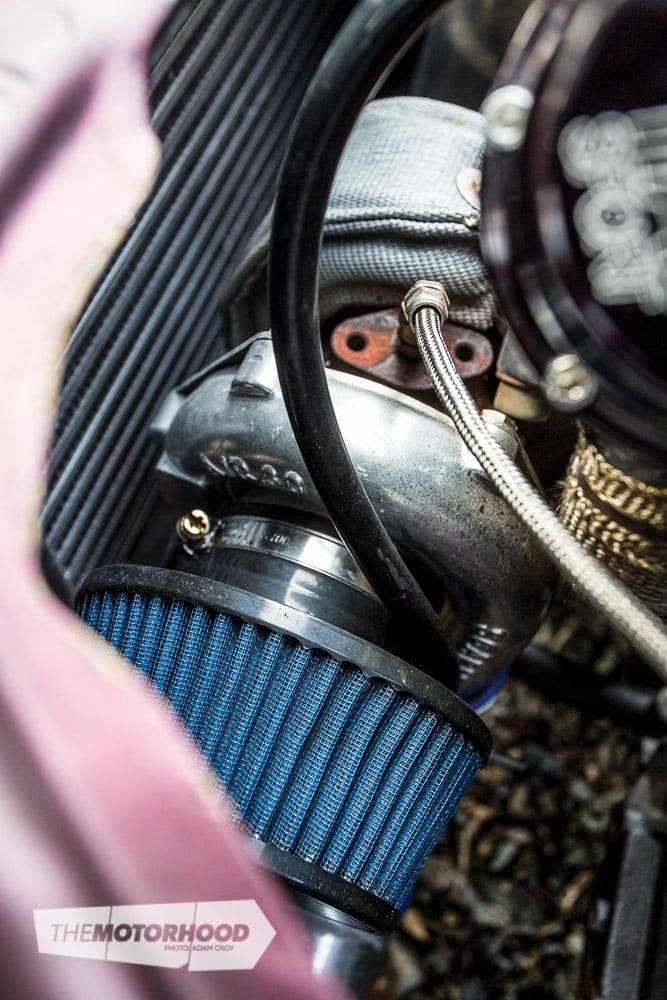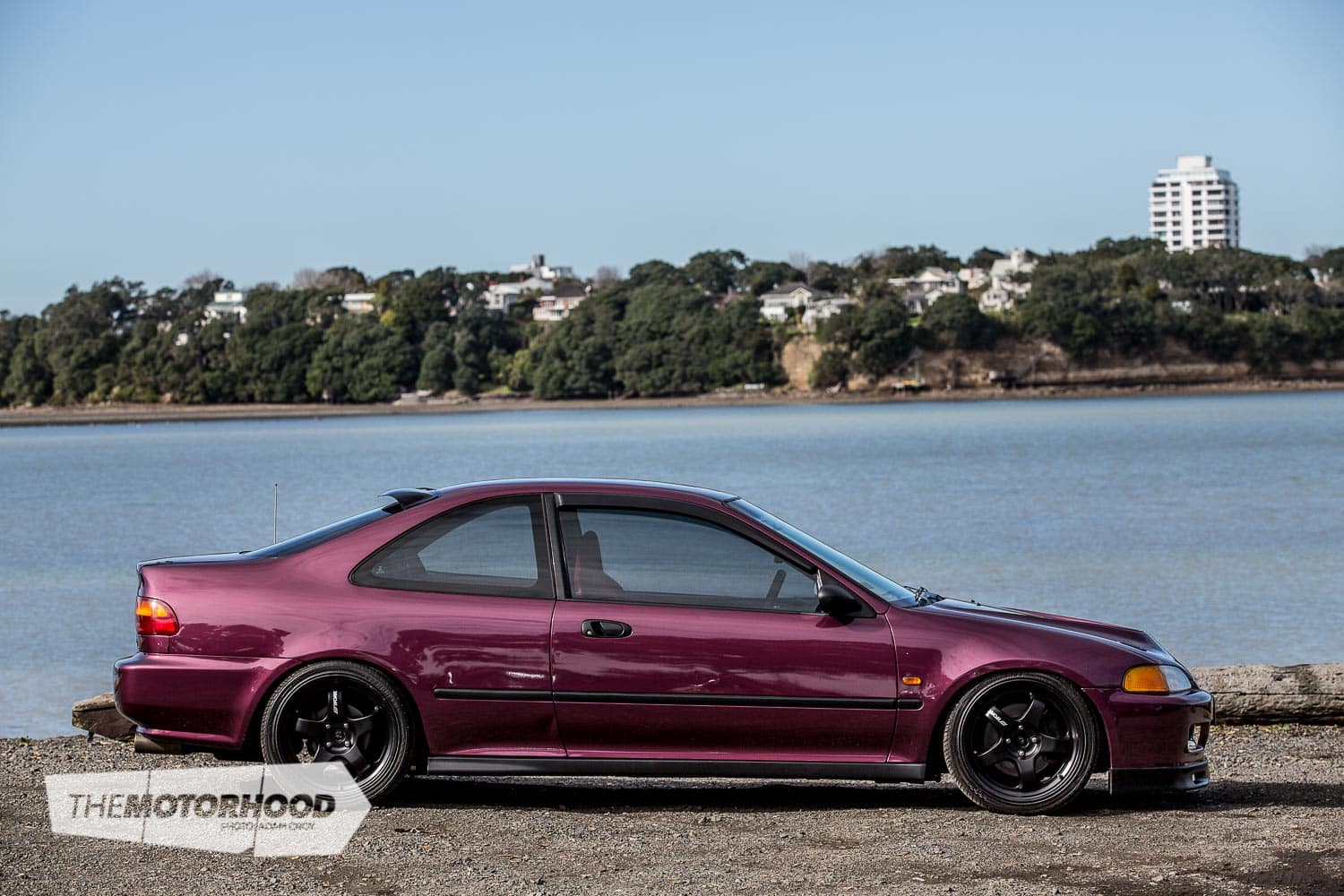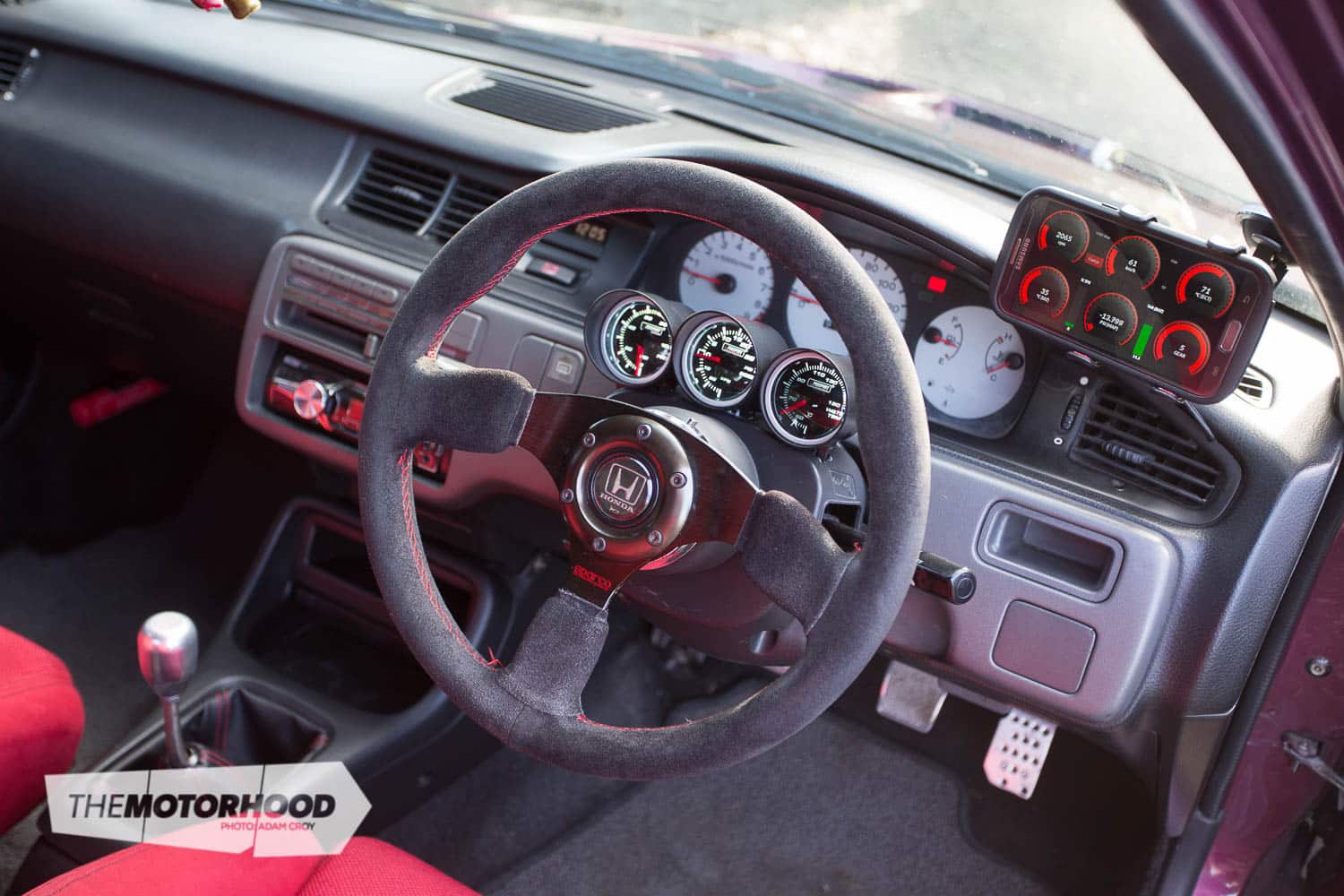data-animation-override>
“Although two-door Honda Civic hatchbacks are a common sight, it’s not often you spot a genuine coupe — especially a turbocharged 2.0-litre VTEC example”
For some people, a certain make or model of car just tickles their fancy, and for Brad Dallas, Honda Civic EJ1 coupes are that model. Having owned five of the American-spec Civics — all with various VTEC engine conversions — before he made the move to Melbourne, he thought he had his EJ1 fetish under control, that was until he moved back to New Zealand, and found out his old Honda pals were still in the game. “I had enough time without a car to have a fair idea about what I wanted the next to be like. I wanted a better-in-every-way version of my last EJ1,” Brad told us, before explaining his next difficulty upon arriving home. It just so happens that EJ1s were even rarer than when he left New Zealand …

After he’d hunted for some time to find the ideal project base, or just any EJ1 for that matter, Brad’s dad stumbled upon one on Trade Me down in Christchurch. The factory D16 engine had a blown head gasket and it was a bit worse for wear, but hey, it was a coupé nonetheless. Brad wasted no time in having the EJ1 transported to Auckland’s North Shore, where the tools were already waiting for it, ready for the complete teardown. The plan from the get-go was to drop in a B20B block from the Honda CR-V of a similar genre, and bolt on a B16A2 head from a Civic SiR EK4, completing the 2.0-litre VTEC package.

Parts were sourced, spanners were swung, and the fresh 2.0-litre engine was in the hole ready to be driven. “After six months of being daily driven, my friend Jonno suggested we supercharge it using one of the direct bolt-on kits he designed and built utilizing the Toyota SC14 supercharger. So we got all the parts together, put them in the boot and drove around to RSL Performance, where we fabricated and installed the kit in the car park, running in to have parts welded as we went.”

Twelve supercharged months went by, then the kit was sold to fund the body restoration. The B20 VTEC was more than enough for a while, but after six months Brad wanted boost again. Instead of bolting on another supercharger kit, he decided that turbocharging the B20 might make for an entertaining ride. A manifold and wastegate were the initial purchases, igniting a build that Brad hadn’t dared to do in the past. “I spoke to mate Jonno for reassurance, as I knew very little about anything turbo besides the basic operation. He told me to just do it, so I did.”

Over the next two weeks he pieced together the entire kit from scratch, with an angle grinder, tape, and a permanent marker. Once the intercooler piping was cut to length and taped together in position, Brad took it to Ronnie Lim to have him weld it together, eliminating the need for copious amounts of silicone joiners. Ronnie also strengthened the stainless-steel turbo manifold to hold the weight of the MSE-built T3/T4 turbo once it was mounted up. As Hondas don’t come with turbos from the factory, they don’t have an oil supply line, so Brad installed an oil sandwich block which had enough outlets for one. For the oil return the sump was removed, baffled, and drilled out to accommodate the return line. Once the 38mm TiAL wastegate was installed and plumbed back into the downpipe, Jonno came over with his laptop, as the Civic was now ready for its first start-up.

The factory ECU was socketed and tuned with Neptune software by Jonno himself, and when they finally strapped it down to the dyno at Revolution Dyno Centre, the newly turbocharged B20-VTEC produced an impressive 180kW at the wheels on 8psi. “The turbo is sized perfectly — it comes on boost at around 2500rpm, pulls hard through the midrange, then VTEC switches over up top and it turns into a complete monster.” Brad continued, “We had the rev limit set to 7500rpm as the rod bolts are the B20’s weak point. Once I replace those with beefier items, we can rev it to 8500rpm, which should net us another 30kW on the same boost.”

If we told you how much this car owed Brad overall, we’d guarantee it would cause upset, but let’s just say this project cost less than a factory Integra Type R for comparison, yet wipes the floor with cars 10 times its value. And as with most Hondas, it’s reliable, fairly fuel efficient, and loves a good beating. With Brad’s ultimate EJ1 now complete, it’s time for him to sit back and enjoy that turbocharged VTEC goodness.
1993 Honda Civic coupe (EJ1)
Engine
- Model: B20B/B16A2, 2000cc four cylinder
- Block: Factory block, baffled sump
- Head: B16A2, polished valves, Skunk2 billet cam seal
- Intake: Factory B16A2 intake manifold, coolant bypass, EK Civic throttle cable, three-inch Simota air filter, 500x280mm intercooler, 2.5-inch piping
- Turbo: T3/T4 modified by MSE
- Wastegate: 38mm TiAL
- BOV: 50mm TiAL
- Fuel: Walbro 373kW/500hp fuel pump, 390cc injectors with custom resistor pack
- Ignition: Factory
- Exhaust: Stainless-steel manifold, RSL Automotive Performance 2.5-inch downpipe with wastegate plumbed in, 2.5-inch TRR mandrel-bent mid pipe, TRR twin-loop muffler
- Cooling: Half-size 52mm radiator, 305mm slimline fan, silicone radiator hoses
- ECU: P72 ECU socketed and tuned with Neptune software
- Other: AC removed, RSL Automotive Performance oil catch can, engine damper
Driveline
- Gearbox: Y80 five-speed, EK9 shift linkages, Skunk2 short shifter with polyurethane shift bushes
- Clutch: Extreme heavy-duty Stage 1
- Flywheel: Factory B16A2
- Diff: DC2 LSD
Support
- Struts: D2 adjustable coilovers
- Springs: D2
- Brakes: BB4 twin-pot calipers, 280mm Brembo Mini Cooper rotors, 25mm DC2 Type R brake booster
- Other: Manual steering rack, Skunk2 Pro C camber arms, DC2 Type R rear sway bar, ASR rear subframe brace, EG9 SiR front strut brace, Cusco rear strut brace
Shoes
- Wheels: 17×7-inch Work Meister S1P
- Tyres: 205/40R17 Evergreen EU72
Exterior
- Paints: Resprayed factory camellia red (added violet)
- Enhancements: Spoon-style front lip and mirrors, carbon-fibre vented bonnet with flush-locking bonnet latches, EK sideskirts, EGR-style rear-window visor
- Other: Tinted windows, NZ-new glass headlights
Interior
- Seats: Recaro SR3 reclinables
- Steering wheel: Suede with red stitching Sparco style, quick-release hub
- Instrumentation: EG9 SiR gauge cluster; Prosport BF boost, oil pressure, and water temp gauges
- Other: Sound deadening removed, custom EK Civic centre console
- ICE: JVC head unit, 6.5-inch components
Performance
- Power: 180kW at the wheels on 8psi of boost

Driver profile
- Driver/owner: Brad Dallas
- Age: 25
- Location: Auckland
- Build time: Ongoing
- Length of ownership: Three years
- Thanks: Jonno Fowler (Shiftjonno) for always being down to lend a helping hand and share some advice, Ronnie Lim at RSL for his fabrication skills, Steve Murch for doing what he does best, my girlfriend Lauren for being (mostly) patient and understanding about my need to build the car.
This article was originally published in NZ Performance Car Issue No. 226. You can pick up a print copy or a digital copy of the magazine below:





















